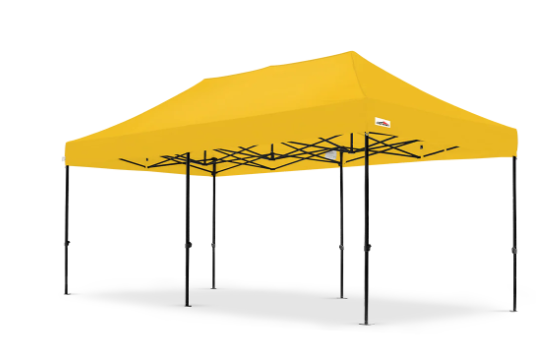
The video production industry is a world of creativity and technical expertise. But for newcomers and even seasoned professionals, the jargon can sometimes feel like an entirely different language. Acronyms like “B-roll” or “FPS” are tossed around casually, often leaving some scratching their heads. In this guide, we’ll demystify 20 of the most common acronyms in the video industry, giving you the tools to speak like a seasoned pro and feel confident in any production conversation.
What Are Video Industry Acronyms?
Acronyms are an essential shorthand in video production. They simplify communication among crew members, saving time on set or in post-production. However, this brevity can be confusing for those unfamiliar with their meanings. Understanding these acronyms not only helps you avoid miscommunication but also allows you to better connect with industry professionals. Whether you’re a filmmaker, editor, or content creator, mastering these terms is a step toward professional fluency.
Pre-Production Acronyms
1. DOP (Director of Photography)
The DOP, also known as the cinematographer, is responsible for the visual look of a film or video. They work closely with the director to craft the lighting, framing, and overall aesthetic of each shot.
2. AD (Assistant Director)
The AD manages the shooting schedule and ensures everything runs smoothly on set. They’re often the voice of authority keeping everyone on track.
3. G&E (Grip and Electric)
This team handles all things related to lighting and rigging. “Grip” focuses on rigging equipment like stands and dollies, while “Electric” focuses on powering and positioning lights.
4. MOS (Mit Out Sound)
A term borrowed from early filmmaking, “MOS” means a shot is filmed without synchronized audio. It’s often used for visuals that don’t require dialogue or sound effects.
On-Set Acronyms
5. DPX (Digital Picture Exchange)
This refers to a high-quality digital file format often used in color grading and special effects. It ensures maximum visual fidelity for post-production.
6. NTSC (National Television System Committee)
If you’re working in North America, NTSC is the standard video format used. Knowing this is crucial for ensuring compatibility across platforms.
7. PAL (Phase Alternating Line)
In contrast, PAL is the video standard used in Europe and many other parts of the world. Understanding the difference between NTSC and PAL helps avoid playback issues.
8. C-47
This seemingly mysterious term simply refers to a clothespin. It’s used for securing gels or other materials to lighting equipment.
Post-Production Acronyms
9. FPS (Frames Per Second)
FPS measures how many individual frames are displayed in one second of video. Common frame rates include 24 FPS for cinematic films and 30 FPS for TV broadcasts.
10. LUT (Look-Up Table)
A LUT is a tool used in color grading to apply a specific look or color style to footage. It’s a shortcut to achieving consistent visual tones.
11. NLE (Non-Linear Editing)
This refers to modern editing software like Adobe Premiere Pro or Final Cut Pro. Unlike older tape-based systems, NLE allows for flexible and non-destructive editing.
12. VFX (Visual Effects)
VFX encompasses the digital enhancements added to footage, such as explosions, animations, or CGI.
13. ADR (Automated Dialogue Replacement)
Also known as “dubbing,” ADR is the process of re-recording dialogue in a controlled studio environment to replace or enhance the original audio.
Distribution and Beyond
14. OTT (Over-the-Top)
OTT refers to streaming services like Netflix or YouTube that deliver video content over the internet without traditional cable or satellite systems.
15. DRM (Digital Rights Management)
DRM protects video content from unauthorized copying or distribution, ensuring creators retain control over their work.
16. CDN (Content Delivery Network)
A CDN speeds up the delivery of video content by distributing it across multiple servers worldwide. This ensures smoother playback for viewers.
17. H.264
A popular video compression format, H.264 balances high quality with manageable file sizes. It’s widely used for web streaming and online uploads.
Production Support Acronyms
18. SAG-AFTRA
The Screen Actors Guild-American Federation of Television and Radio Artists is a labor union that represents performers. Projects using SAG-AFTRA talent must follow specific guidelines and pay scales.
19. QC (Quality Control)
Before distribution, every video undergoes QC to check for errors in audio, visuals, or metadata.
20. SFX (Sound Effects)
SFX refers to audio enhancements added in post-production, such as footsteps, explosions, or ambient noise.
Why Learning Acronyms Matters
Mastering Video Industry Terminology can feel overwhelming at first, but doing so has tangible benefits. Not only will you improve your ability to communicate on set or in meetings, but you’ll also gain credibility with colleagues and clients. Familiarity with these terms signals professionalism and demonstrates your commitment to the craft.
Collaboration and Evolving Language
The video production industry thrives on collaboration, and acronyms are an integral part of its shorthand language. By learning the meanings behind terms like LUT, ADR, and OTT, you’ll not only enhance your own skills but also foster stronger connections with others in the field. So whether you’re new to the industry or looking to refine your knowledge, these 20 acronyms are a great place to start. Dive in, stay curious, and before you know it, you’ll be speaking like a pro.
Write and Win: Participate in Creative writing Contest & International Essay Contest and win fabulous prizes.


